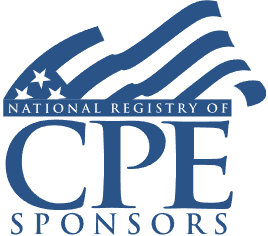SAS 145: Assessing the Risks of Material Misstatement
Scalability, Stand-Back Provision, Determining Inherent and Control Risk

Course Details
- smart_display Format
On-Demand
- signal_cellular_alt Difficulty Level
Intermediate
- work Practice Area
Accounting
- event Date
Wednesday, December 4, 2024
- schedule Time
1:00 p.m. ET./10:00 a.m. PT
- timer Program Length
110 minutes
-
BARBRI is a NASBA CPE sponsor and this 110-minute webinar is accredited for 2.0 CPE credits.
This webinar will discuss implementing the significant revisions made to risk assessment by Statement of Auditing Standards (SAS) 145. The level of risk or susceptibility of financial statements to material misstatement guides the audit process. The panelist of experienced auditors will review the updated and new definitions in SAS 145 and walk CPAs through the process of identifying and assessing risks of material misstatement under the new standard.
Faculty

Mr. Marciano CPA, Certified Government Financial Manager and a Chartered Global Management Accountant, he is recognized as a national resource for government and nonprofit accounting. He regularly leads training sessions for professional staff and has given seminars on behalf of the New York State Government Finance Officers Association, New York State Association of School Business Officials, New Jersey Society of Certified Professional Accountants and the Institute of Internal Auditors (Long Island Chapter). Mr. Marciano is a discussion leader and instructor for the AICPA and Surgent Professional Education on subjects including governmental and nonprofit accounting and auditing.
Description
While the new standard is intended to enhance risk assessments, SAS 145 is massive. It recognizes new complexities in audits as well as the use of automated tools and techniques, including the use of remote inventory observations with drones and video cameras and the use of audit data analytics. It includes updated and new definitions, clarifies the work effort related to the system of internal control, and is effective for audit periods ending on Dec. 15, 2023 and after.
Risk assessments set the course for an audit. Failure to sufficiently assess risk is a common deficiency cited in peer reviews. SAS 145 requires auditors to separately assess inherent risk and control risk and provides a new definition of significant risk. There are unique considerations when an auditor omits testing controls and assesses control risk at the maximum level.
SAS 145 is intended to be scalable. Recognizing that the size and complexity of engagements vary, SAS 145 allows an auditor to employ judgment when designing risk assessment procedures to comply with these guidelines. Also new is a stand-back provision that essentially requires the auditor to evaluate the completeness of significant classes of transactions, account balances, and disclosures where risks of material misstatement reside. It is clear that SAS 145 may have various impacts on the audit process going forward.
Listen as Philip Marciano, CPA, CGFM, Partner at Citrin Cooperman, details the new and updated aspects of SAS 145, Understanding the Entity and Its Environment and Assessing the Risks of Material Misstatement, for auditors.
Outline
- Assessing risk: an introduction
- Definitions
- Assessing risks
- Inherent risk
- Control risk
- Maintaining professional skepticism
- Scalability
- Stand-back requirement
- Documentation
- Other considerations
Benefits
The panelist will cover these and other key considerations:
- The interplay of inherent and control risk
- Exercising judgment and scalability
- Applying the new stand-back requirement
- How assessing control risk at a maximum impacts an audit
- Best practices for implementing SAS 145
NASBA Details
Learning Objectives
After completing this course, you will be able to:
- Identify the impact of the stand-back requirement on audits
- Determine the effective date of SAS 145
- Decide how the new SAS 145 affects risk assessment
- Recognize situations where scalability may apply to audit procedures
- Ascertain differences in risk definitions under SAS 145
- Field of Study: Accounting
- Level of Knowledge: Intermediate
- Advance Preparation: None
- Teaching Method: Seminar/Lecture
- Delivery Method: Group-Internet (via computer)
- Attendance Monitoring Method: Attendance is monitored electronically via a participant's PIN and through a series of attendance verification prompts displayed throughout the program
- Prerequisite: Three years+ business or public firm experience, preparing reviewed, compiled, and audited financial statements and the relative disclosures. Specific knowledge and understanding of GAAP, SSARS, and peer review policies.

Strafford Publications, Inc. is registered with the National Association of State Boards of Accountancy (NASBA) as a sponsor of continuing professional education on the National Registry of CPE Sponsors. State boards of Accountancy have final authority on the acceptance of individual courses for CPE Credits. Complaints regarding registered sponsons may be submitted to NASBA through its website: www.nasbaregistry.org.
Related Courses

Structuring Engagement Letters for Specific Engagements: Key Components, Managing Clients' Expectations, Limiting Risk Exposure
Thursday, April 10, 2025
1:00 PM E.T.

State Tax Treatment of UBTI for Exempt Organizations: Calculations, Conformance, and Apportionment
Friday, April 18, 2025
1:00 p.m. ET./10:00 a.m. PT
Recommended Resources
Gain a Competitive Edge Through Efficient CPE Strategies
- Learning & Development
- Business & Professional Skills
- Career Advancement